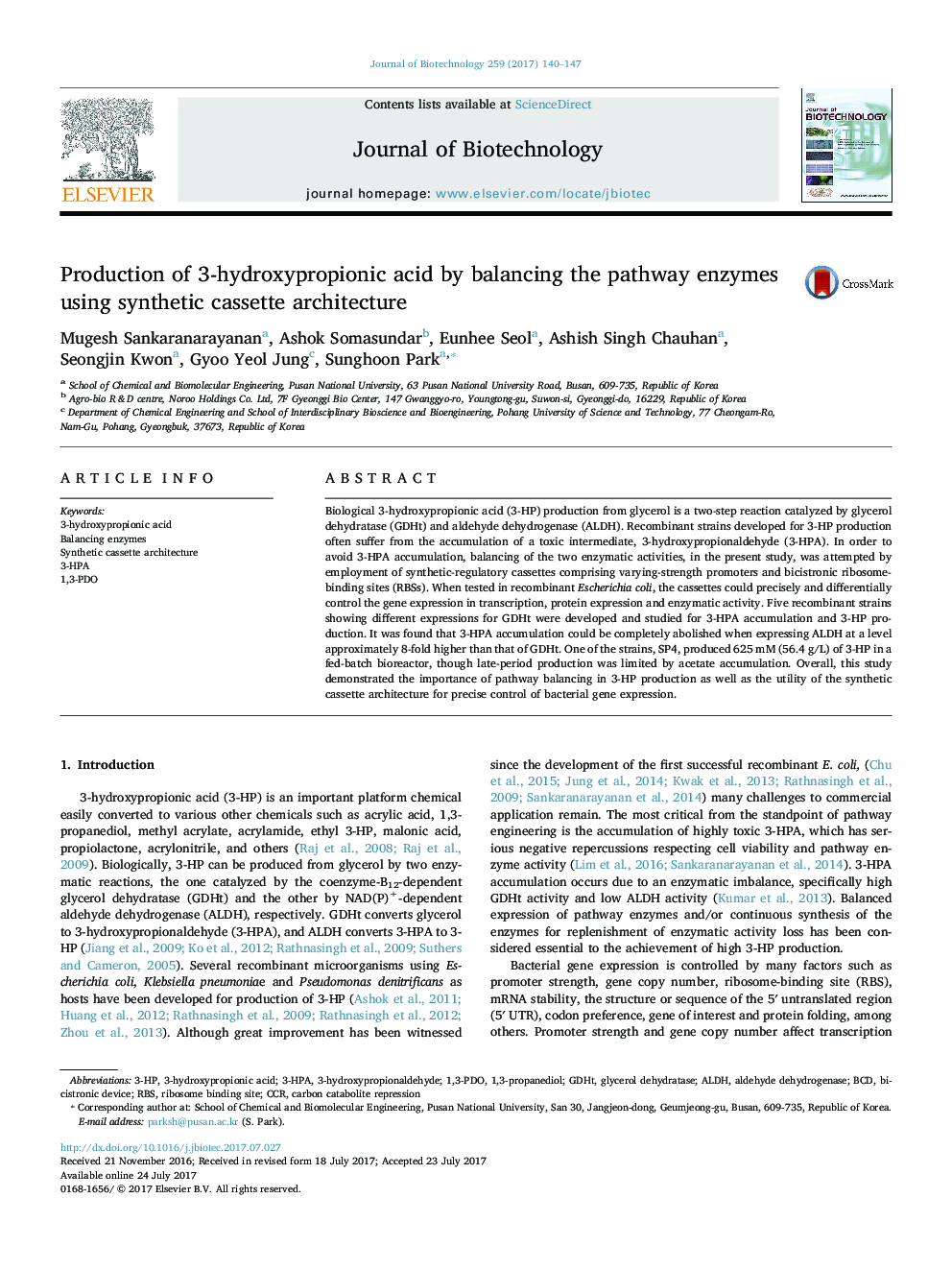| کد مقاله | کد نشریه | سال انتشار | مقاله انگلیسی | نسخه تمام متن |
|---|---|---|---|---|
| 6451956 | 1416984 | 2017 | 8 صفحه PDF | دانلود رایگان |
- Gene expression control for 3-hydroxypropionic acid (3-HP) biosynthetic pathway was studied.
- Synthetic promoter and bicistronic RBS were employed for balanced pathway expression.
- Synthetic cassette could precisely control gene expression and enzyme activities.
- A well-balanced strain could produce 3-HP without accumulation of toxic intermediate.
Biological 3-hydroxypropionic acid (3-HP) production from glycerol is a two-step reaction catalyzed by glycerol dehydratase (GDHt) and aldehyde dehydrogenase (ALDH). Recombinant strains developed for 3-HP production often suffer from the accumulation of a toxic intermediate, 3-hydroxypropionaldehyde (3-HPA). In order to avoid 3-HPA accumulation, balancing of the two enzymatic activities, in the present study, was attempted by employment of synthetic-regulatory cassettes comprising varying-strength promoters and bicistronic ribosome-binding sites (RBSs). When tested in recombinant Escherichia coli, the cassettes could precisely and differentially control the gene expression in transcription, protein expression and enzymatic activity. Five recombinant strains showing different expressions for GDHt were developed and studied for 3-HPA accumulation and 3-HP production. It was found that 3-HPA accumulation could be completely abolished when expressing ALDH at a level approximately 8-fold higher than that of GDHt. One of the strains, SP4, produced 625Â mM (56.4Â g/L) of 3-HP in a fed-batch bioreactor, though late-period production was limited by acetate accumulation. Overall, this study demonstrated the importance of pathway balancing in 3-HP production as well as the utility of the synthetic cassette architecture for precise control of bacterial gene expression.
Journal: Journal of Biotechnology - Volume 259, 10 October 2017, Pages 140-147
